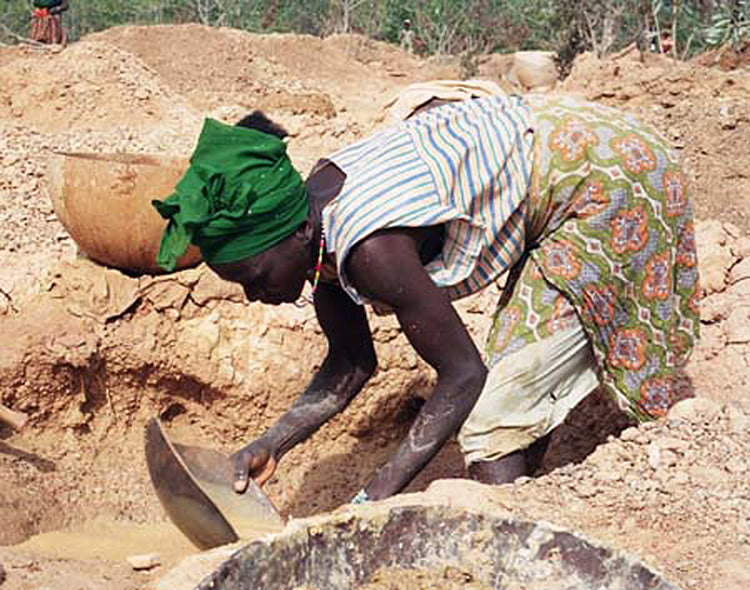The stories of an Earth-grown diamond and a gold band both begin in a mine
Mining is the extraction of minerals and other geological materials from deposits far beneath the Earth’s surface. Gold, diamonds, and other gemstones are mined worldwide, with the vast majority coming from small-scale artisanal operations, often within the informal sector.
It’s estimated that about 90 million carats of rough diamonds and 1,600 tons of gold are mined for jewelry every year, generating over $300 billion in revenue. When sustainability is a top priority for a consumer or brand, inadequate environmental regulations and human rights abuses make navigating the jewelry industry difficult.
We understand this because we are a jewelry brand that cares very deeply about our impact. But before we knew better, we felt stuck between a rock and a hard place (no pun intended). Now that we know better, we can do better.
What are the effects of gold and diamond mining on our planet?
Spoiler: It’s all pretty bad.
Industrial mining is an invasive process that adversely affects the land and biodiversity of the area. It’s estimated that nearly 100sq ft of land is disturbed for every carat of diamond mined and almost 6,000 pounds of mineral waste is created. Some countries expect companies to rehabilitate the area after mining operations are shut down, but violations are common and the land is rarely transformed back to its original state.
Large-scale operations tend to use explosives to harvest gold ore from rock. These practices have the affinity to disrupt deep deposits of unrefined materials in the Earth, such as cyanide and mercury, which results in soil, air and water contamination.

Deforestation, land disruption and toxic pollutants contribute to the loss of biodiversity. Birds and other animals that depend on the trees for food and shelter are lost. Plants that rely on the shade from trees die. Mining leads to a massive habitat loss for various flora and fauna, ranging from soil microorganisms to large mammals.
Artisanal and small-scale gold mines emit around 1,400 tons of mercury annually, making them the largest source of mercury pollution on Earth. Mercury is employed to separate gold from rock with little effort. Separation is typically done by hand, exposing workers to dangerously high levels of mercury.
What are the effects of gold and diamond mining on humans?
Spoiler: This is also pretty bad.
According to the Humans Right Watch group, an estimated 40 million people work in unregulated artisanal and small-scale mines, which operate with little or no machinery. One-third of laborers are women who often bring their children with them for help.
Many children work in dangerous conditions, sustain back injuries from carrying heavy rocks and suffer respiratory disease from inhaling toxic dust. In Nigeria, artisanal gold mining has caused unintentional releases of lead that has killed over 400 children.

During war and conflict, civilian miners suffer as abusive armed forces seek to exploit the gold and diamonds found in mines. Since these precious materials are mined in dozens of countries worldwide and traded, exported, and processed in other countries, it can be challenging to know whether human rights abuses taint them.
How can we do better?
Some good news!
Although laws and regulations intend to minimize the damage caused by mining, they are insufficient, and loopholes are easily utilized. Still, our current climate crisis and the increased demand from shoppers for environmentally friendly and ethical products forces the jewelry industry to adopt better practices and prove that change is possible.
The Alliance for Responsible Mining (ARM) is actively improving artisanal and small-scale mining operations through Fairmined certification. What is Fairmined gold?
"Fairmined certified gold comes from artisanal and small-scale mining organizations certified to the Fairmined standard. This certification guarantees that the gold has been extracted in harmony with nature, human dignity and sustainable development, contributing to the transformation of lives in these mining communities." fairmined.org
Member-based organizations, like Ethical Metalsmiths and Jewelers Vigilance Committee, are using the power of collective voice to educate, bolster transparency, and collaborate with government entities to implement industry-wide guidelines.
As with anything, it's about progress, not perfection. There's a lot to be done, but we're here for the long haul.














